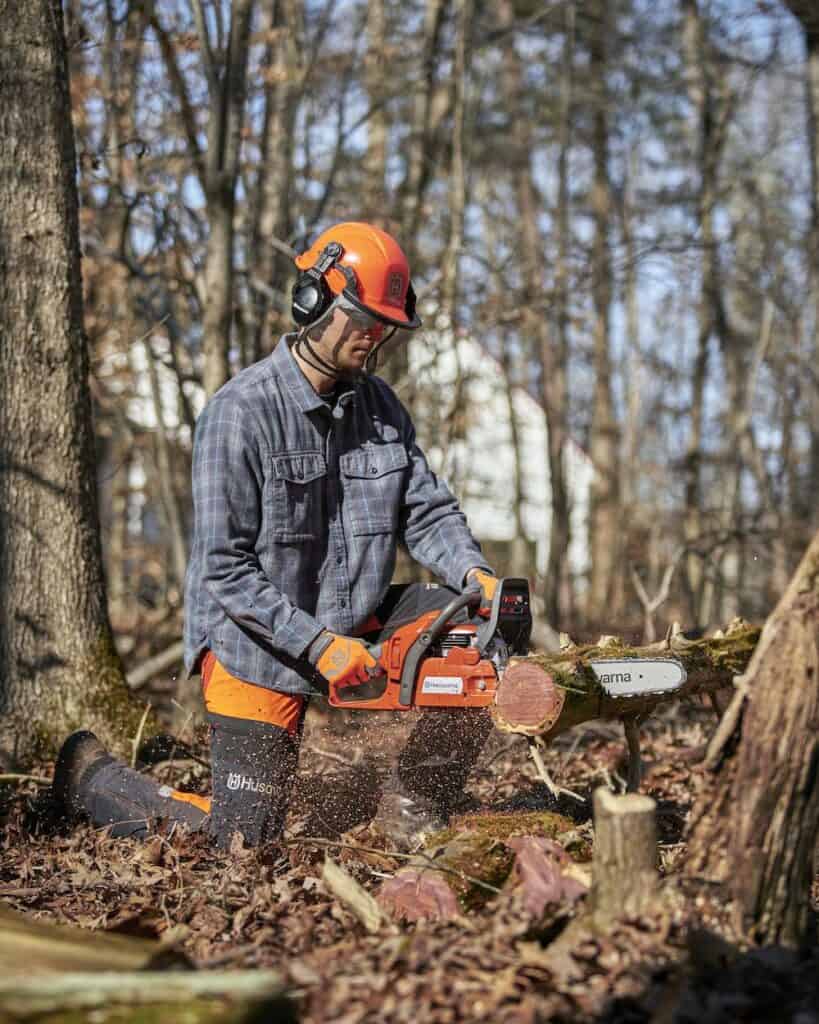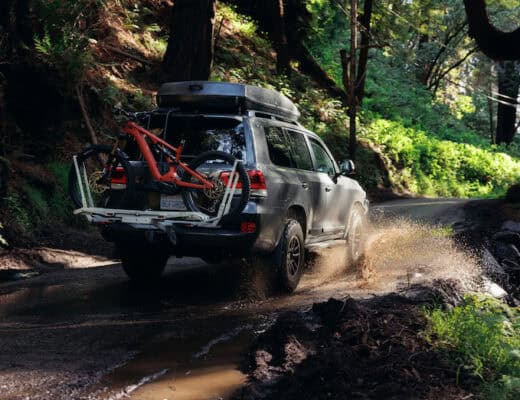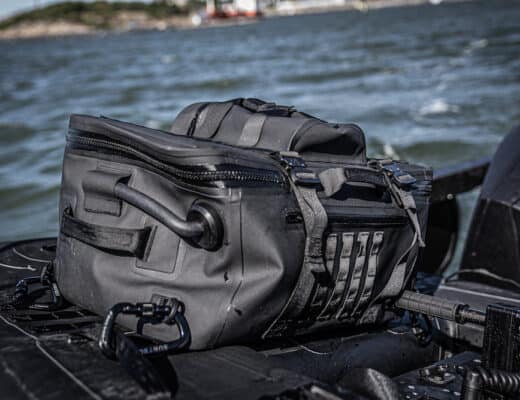October is Chainsaw Safety Month, and Husqvarna has shared some tips with us on how to use a chainsaw safely.

A chainsaw is a handy tool for homeowners to help cut down fallen branches or limb large trees that need trimming. If you live in an area that is prone to storms, chainsaws are an even more valuable piece of equipment.
Knowing the how, when and best practices for chainsaw operation is key to the confidence and assurance it takes to proceed successfully and safely, especially for residential use, first-time chainsaw users.
“Our range of 400 series gas chainsaws are powerful enough to help homeowners get quick results and can be operated by chainsaw users of varying skill levels if they are well prepared,” notes David Breeden, Husqvarna Senior Territory Manager, and an ISA certified Arborist.
“Gas chainsaws can be a particular asset in areas where power is out, and battery-powered tools cannot be recharged.” This is a great point and one I have never really considered.
Breeden offers these top tips for residential chainsaw use.
Be Prepared
Get training before an urgent need strikes and supplement your knowledge with online videos by verified experts. Reading the owner’s manual should always be the first step you take before you pick up a chainsaw, closely followed by adhering to as much instruction and advice needed to ensure proficiency and confidence.
WATCH: this short video by the Center for Urban Agriculture on chainsaw safety for storm-damaged tree cleanup offers a visual guide and instructions for homeowners.
Personal Protective Equipment Must-Haves
Don’t use a chainsaw without first investing in and using personal protective equipment (PPE). Essential elements include a helmet, protective goggles to ward off scratches and sawdust spray, hearing protection to protect against harmful loud noises, and gloves, trousers, and boots with saw protection capabilities.
Map It Out
Before you begin, assess the full scope of the damage. Create a plan on prioritizing the work and, if you are working with others, how to delegate to ensure you are all using your resources effectively without getting in each other’s way.
Know Your Limitations
Don’t take on or volunteer for a job you sense, or can see upon assessment, is beyond your skill set and comfort. Only tackle tasks you can comfortably and safely undertake, leaving situations like the felling of trees, clean-up involving limbs around downed power lines or near a home to the professionals.
Be sure to also take plenty of breaks and stay hydrated; mistakes can occur when we are tired.
Start Your Chainsaw on the Ground
Start your chainsaw on flat ground, with the chain brake engaged. Don’t forgo this important rule during intense, fast-paced clean-up efforts.
How To Avoid Kickback
Kickback, a reactive force during chainsaw usage, can cause injury. You can avoid the greatest risk of kickback simply by avoiding any cutting using just the tip, or nose of the chainsaw. Always hold the saw with both hands with the right hand on the rear handle, and the left hand on the front handle, regardless of your dominant hand. Keep your thumbs and fingers wrapped around the handles.
Buddy Up
If you pair up with a friend or neighbor, be sure to stay a safe distance apart when your chainsaws are in use. A distance of 10 feet apart is recommended, as well as always alerting those around you of your presence.
Bend Your Knees
You can avoid back soreness by bending your knees slightly while cutting, especially in low positions. Try to avoid bending your back when operating the chainsaw for extended periods of time.
Find the right chainsaw for the job from Husqvarna’s residential chainsaw collection.



